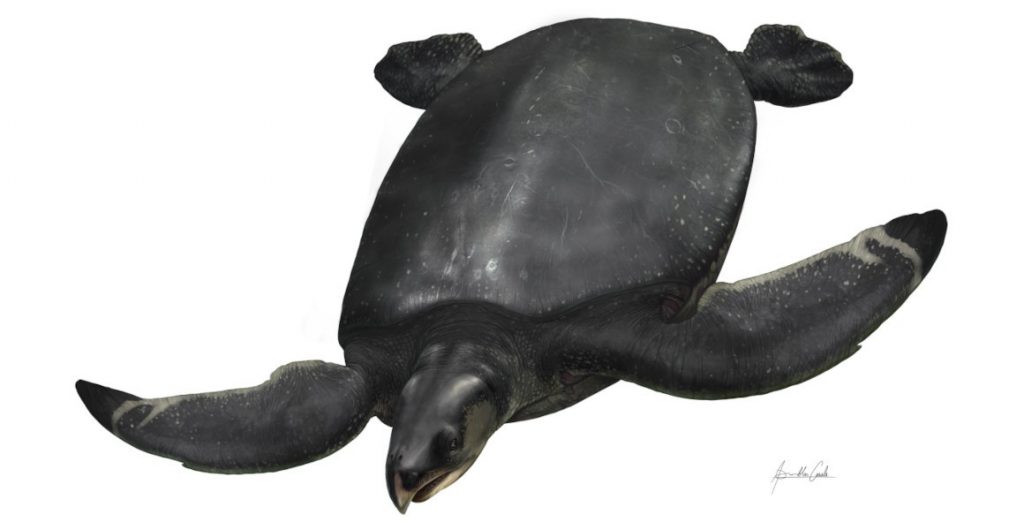Researchers have reported the discovery of a previously unknown species of giant tortoise. More than 70 million years ago
The new species, which scientists have namedLeviathanochelys aenigmatica, slightly shorter than Archelon, the largest turtle species found in North America. But unlike the latter, the body of the European giant is much wider.
 Reconstructed appearance of Leviathanochelys aenigmatica. Image: Natural History Museum, ICRA_Arts
Reconstructed appearance of Leviathanochelys aenigmatica. Image: Natural History Museum, ICRA_Arts
The discovery of Leviathanochelys aenigmatica wascompletely random. A traveler walking through the Pyrenees near the village of Col de Nargo in northern Spain came across fragments of bones. The remains were collected and placed in a local museum, but remained unexplored for a long time.
In 2021, Oscar Castillo-Visa, co-author of a newresearch, examined the remains and began new excavations at the site. This led to the discovery of the giant tortoise's pelvis as well as the back of its shell. Although the remains are fragmented, they contain enough distinctive features for researchers to describe them as a new species.
 Fossilized remains of Leviathanochelys aenigmatica. Image: Oscar Castillo-Visa et al., Scientific Reports
Fossilized remains of Leviathanochelys aenigmatica. Image: Oscar Castillo-Visa et al., Scientific Reports
The genus assigned to the tortoise, Leviathanochelys,comes from the name of the biblical sea animal Leviathan and the ancient Greek word for "turtle". And its specific name, aenigmatica, refers to some of the animal's unusual characteristics.
Leviathanochelys has a very large pelvis and a reduced carapace. As the carapace of this species has increased in size, the spaces between the bones have become larger to reduce its weight and bone density.
Sandra Chapman, former curator of the Museum of Fossil Reptiles and Birds, study co-author
Researchers note that external signsthey say that this species is not a close relative of the American ones, which means that turtles have repeatedly reached gigantic sizes during evolution. Scientists hope that Leviathanochelys aenigmatica is only the first of many giant species that lived in Europe, and future excavations will bring new discoveries.
Read more:
Why the Moon and not Mars: the main thing about the Artemis-1 mission and why it is needed
An ancient amulet rewrote the history of Europe's most mysterious language
The main theory of the origin of man was refuted: where did we come from